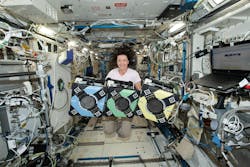Free-flying robots in space: How real-life droids are testing new tech
WASHINGTON - Five years ago, on a space station not so far away, a trio of cube-shaped robots embarked on a multi-year mission to help pave the way for future robots and autonomous systems in space. Much like the droids of the “Star Wars” universe, NASA’s free-flying robotic system, Astrobee, aims to assist astronauts on the International Space Station (ISS) with tasks and test out new technologies in ways not possible on Earth, Amy Thompson writes for ISS National Laboratory. Continue reading original article.
The Military & Aerospace Electronics take:
29 April 2024 - In the latest issue of Upward, the official magazine of the ISS National Lab, Thompson writes about how researchers are using the Astrobees—named Queen, Honey, and Bumble—to test innovative new technology with important applications on future spaceflight missions and back on Earth.
In one investigation, engineering firm Bosch partnered with aerospace company Astrobotic to use the Astrobees to test smart microphone technology that can identify anomalies in spacecraft and other equipment by making sense of sounds. In another project, researchers from the Massachusetts Institute of Technology (MIT) and the German Space Agency used the robots to test algorithms and technology that could help recover tumbling satellites in space.
Related: NASA looks to commercial companies for International Space Station astronaut missions
Related: The International Space Station connected via the SpaceDataHighway
Jamie Whitney, Senior Editor
Military + Aerospace Electronics
